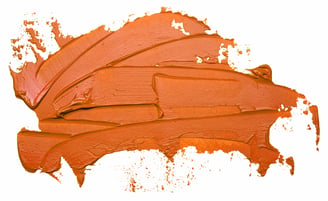MANUFACTURER BRAND AWARENESS
Strategy Guide
Strategy Before Tactics
Manufacturers have access to an abundance of online tools and tactics for building brand awareness. Unfortunately, this can be a double-edge sword. On one side you have many low cost options to increase brand awareness. On the other side, they don't work very well without knowing how to use them to build your brand.
What's worse is the ridiculous number of half-day or even full-day training sessions on how to use tools like Twitter or WordPress. These classes are helpful from a tactical standpoint. They teach how to functionally use each tool, but the strategy behind how to use them to build your brand isn't there.
The missing strategy component of these seminars leads to poor results, which leads to businesses being discouraged with the tactic and giving up on it. In the end, it seems like your employees took that time away from work for little to no ROI.
You need a clear view of the plan and how to achieve your goals if you want to get that ROI. Speaking of goals...
Identify What Success Looks Like (Your 'Why')
Step one in building your brand awareness strategy is clearly defining success. This takes some real thought. It may require a meeting with your leadership team. Here's how we suggest approaching this process.
Start By Painting Broad Strokes
 It may seem odd to start by looking at the impact of increasing brand awareness on you, personally, but that's where the real gumption to do something about your lack of strategy comes from.
It may seem odd to start by looking at the impact of increasing brand awareness on you, personally, but that's where the real gumption to do something about your lack of strategy comes from.
So, will you get a promotion? Will you retire earlier? Do you get to hire more high-quality talent? Does the value of your stake in the business increase substantially?
How will it impact your whole company? As the leader of a business, you no doubt want to increase sales and profit. That's extremely vague, but it's a start. You would probably also like to be in the position to be selective about which business you accept. Again, vague, but a good start.
Refine The Broad Strokes With Some Detail
Once you've laid out your broad goals, it's time to add the details. Take each broad objective and establish SMART goals for them.
Increasing sales is broad and vague. You can earn one more dollar this year than last and you've achieved this objective. A better SMART goal is to increase sales by 20% to $23 million by December 31st.
When refining your goals, make sure the details are achievable. If you set a target that's too far out of reach and not realistic, you may get discouraged and give up on the goal. Make the goal readily achievable (with serious effort).
Document Your 'Why' and Hold Yourself Accountable
This step isn't complete until it's written down and shared. You have to document and communicate your 'why' to be sure you hold yourself (and your team)
You will also need to have regular (quarterly at minimum) meetings with your team to review progress towards the goals you've set. Consistent review of your progress will help you get back on course if you've veered and celebrate the small victories along the way.accountable for achieving it.
Who Should Be More Aware Of Your Manufacturing Brand?
As a manufacturer, being a household name like Coke or Apple is unlikely. Understanding this point is extremely important as you define who you want to be more aware of your brand.
 Start By Defining Generic Target Markets
Start By Defining Generic Target Markets
Manufacturers often work with a handful of industries. Within each of these industries there is probably an ideal buyer profile that defines things like:
- minimum annual revenue
- geographic location
- number of employees
- minimum years in business.
These are generalized data points that tend to define a target market. Target markets are a decent starting point, but leave a lot to be desired.
By defining the target markets, you have the beginning of the answer to who needs to be more aware of your business.
Next, Get Into the Weeds With Buyer Personas
Buyer personas take target markets and give them human characteristics. You need to get in the weeds with who the different people at companies you want to target are and what makes them tick as people and buyers.
 For example, let's say Solar is one of the industries you've defined as a target market. Within that industry your ideal buyer profile is companies with
For example, let's say Solar is one of the industries you've defined as a target market. Within that industry your ideal buyer profile is companies with
- $15 million in annual revenues,
- located on the east coast of the US,
- they have 50 or more employees,
- and they have been in business for at least 5 years.
Defining the buyer persona(s) means identifying who at these solar companies should be more aware of your brand. This is a layer deeper than the target market.
While we want to know the common demographics of your buyer persona(s), we need to understand the psychographics as well. What makes them tick? What are their motivations at work and in life? What drivers help them make a buying decision? What role in the buying process do they play? Are they the final decision maker or the influencer to that person?
To Increase Brand Awareness, Define the 'Who'
Understanding and clearly identifying who you want to increase brand awareness with is vital to a successful manufacturer brand awareness strategy. Without this step, you will waste a lot of time and money promoting yourself in the wrong ways.
 Your Prospect's 'Why'
Your Prospect's 'Why'
Your prospects couldn't care less about the fact that you want to build better brand awareness with them. They only care about what's in it for them. In fact, the mere act of becoming aware of a brand tends to be a subconscious thing. How do you go about sticking in their subconscious? Let's take a look.
What problem(s) do you solve for your customers?
On the surface, this is an easy question. As a manufacturing company, you might say that you provide them parts that they need. I'd imagine there are several other companies that provide them things they need.
What's the real value you provide, that prospects want? Is it speed with shortened lead times? Is it a one-stop shop of capabilities? Is it higher quality? Is it lowest pricing? With these examples, the prospect's problem is likely too slow of turnaround, too many steps in their process, low quality parts, or too high of prices.
Then, look at the problem the end product or service solves. If you sell human resources consulting services, your services may solve the problem of low morale in someone's workforce. It may solve cultural problems at a company.
The bottom line is that you have to identify why your prospects should be aware of you in THEIR terms, not yours. Defining your buyer persona(s) and buyer journey will help do this.
Understanding Their 'Why', Clarifies How
If you understand why a prospect would want to be more aware of your B2B brand, you can get to work building how you will build awareness with them.
Today's buyer researches their problems or opportunities online first. That's where you have the most potential for building your B2B brand awareness.
Take your list of 'whys' from the previous section, and start brainstorming titles for helpful, 400-800 word articles (blog posts) that talk about the problems your prospects have (remember, in their terms), and publish them to your blog once or twice a week.
We recommend getting your leadership team in a room for an hour or two and making a long list of titles. Distribute writing responsibilities across the group. Your leaders can either write the articles or delegate it.
By regularly publishing helpful articles, you will gain visibility in Google when your prospect searches for their problem or opportunity, thus increasing manufacturer brand awareness!
You should also share the articles in social media channels like Facebook, Google+, LinkedIn, and Twitter.
Over time your website will rank well in Google for keywords that your prospects are searching for. When they land on your site and learn answers to their questions, they will slowly start that process of subconsciously connecting with your brand, thus building brand awareness.
This Step Is The Hardest
Making the right decisions on content that will resonate with your prospects is easily the hardest step of building a manufacturer brand awareness strategy. This is especially true if you don't have in-house marketing people or writers. Adding to the challenge, it can often take upwards of six months to start seeing traction in search engines for your content. DON'T STOP. Throwing in the towel too soon is a huge mistake.
Publishing regular content isn't the final step in your brand awareness strategy. It's important to take stock in what you've done and review metrics that tell you if it's working.
What Metrics Should You Monitor and When?
Before we dive into metrics, I want to forewarn you that content publishing doesn't lead to overnight results. If it did, you and everyone else would already be doing it. Content can take two or more weeks to be indexed by Google to show in search results, and even longer to work it's way to the top of results, depending on the competitiveness of your keywords.
With that in mind, I recommend regularly publishing content and sharing it in social media for six weeks before you look into these metrics. After the initial six weeks, you should review them bi-weekly. If you decide to work with an inbound marketing agency to do this, they will probably evaluate your metrics weekly.
Blog Views
Over time, you will find that your blog gets way more views and visitors than the traditional pages on your website. This is a VERY good thing. An increase in this number means you are ranking better in Google and seeing more activity in social media, which also means you are increasing your manufacturer brand awareness.
Because most prospects don't care about your services when they first start researching their problems or opportunities, you want them to start by finding your blog content. This is a gateway to the other pages on your site.
Social Media Followers, Shares, and Engagement
As you post in the various social channels and follow relevant accounts yourself, you will begin to grow your followers, shares and overall engagement. This leads to more brand awareness. These numbers should all increase regularly. Some examples of these metrics include:
- Twitter followers
- Twitter retweets
- Twitter 'likes'
- Facebook followers
- Facebook comments
- Facebook 'likes'
- Facebook shares
- etc...
These numbers will not jump overnight, but will steadily increase with regular activity from you. 
Keyword Rank
As I noted in the previous step, the keywords that are relevant to your prospects will improve in rank over time. This will lead to an increase in quality website traffic. That will build more brand awareness.
Tools like HubSpot and Google Analytics give you great details on which keywords are improving and declining.
Adjust Your Strategy Using These Metrics
As the leader of your brand awareness strategy, you have to evaluate these metrics regularly and make decisions on how you should adapt.
If you find that a keyword is increasing in rank and could use some additional content to push it to page one in Google, you might want to back burner some of the other blog content you have scheduled.
If you find that social media engagement is very low on a certain platform, you may want to change your approach for that platform or give it much less focus.
The important thing with these metrics is that you review them regularly and take action to improve. Simply digesting the numbers won't improve your brand awareness. You have to adjust your strategy to improve.
Get Started Building a Manufacturer Brand Awareness Strategy
It's time that the best kept manufacturing secret gets out! Resist the urge to skip any of the steps above in crafting your strategy, especially the identifying what success looks like for you and your company. That's important motivation for seeing the strategy through.
When looking to deploy tactics, we highly recommend focusing on the ones that will give you access to the most prospects = online.
Additional Manufacturer Brand Awareness Resources
- 25 Ways to Increase Brand Awareness with Inbound Marketing
- 5 Signs Your Manufacturing Branding is a Waste of Money
- Increase Brand Awareness by Feeding Your Blog a Well-Rounded Diet
- What is B2B Branding and Why Do Businesses Need It?
- How to Measure Your B2B Brand Awareness
- Should You Invest in B2B Brand Awareness or Lead Generation?
- How to Solve Your B2B Brand Awareness Problem
- 4 B2B Branding Horror Stories That Will Make You Cringe
- The 10 Step Guide to Increasing Brand Awareness with Social Media
- 14 B2B Branding Statistics: Tips to Increase Brand Awareness
- B2B Branding Mistakes: Which One Describes Your Business?
- 4 Steps To Increase Brand Awareness (For Cost-Conscious Humans)
- B2B Branding Tips for Manufacturers
TAKE THE QUIZ!
Do you currently have an in-house marketing team?
How often are you currently producing evergreen article-based content?
Are you promoting any content on social media?
Do you send regular (at least monthly) education-based newsletters to your email database?
Is your website updated to the latest SEO best practices?
Are you doing any paid advertising on google or on social media?
Which best describes your marketing goals?
Do you currently have a Marketing Agency?
Get Resources Based On Your Quiz Results!
Your Brand Awareness...
...drives your inbound leads online.
Fill out the form on the right to schedule a chat with one of our experts!
We'd love to talk about your goals, and point you in the right direction with your demand generation strategy!





